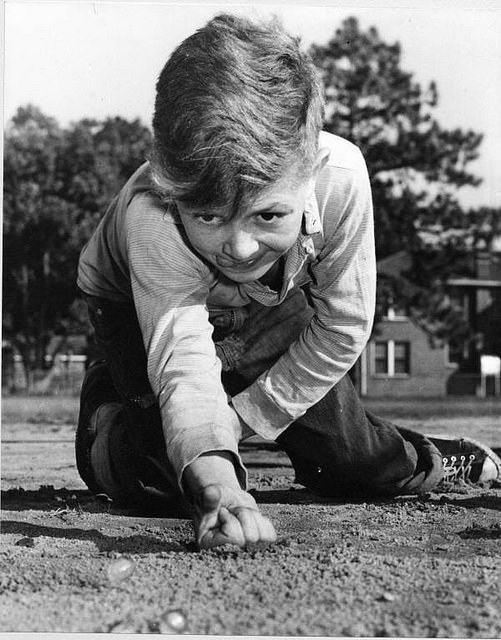Alice and Bob Marble Fight - Part 3
 Alice and Bob are at either end of a (really long) track, whose width is the diameter of a marble. Alice has 30 red marbles and Bob has 20 blue marbles. They send all of their marbles towards each other in quick succession. Whenever 2 marbles collide on the track, they will just bounce back and start traveling in the opposite direction.
Alice and Bob are at either end of a (really long) track, whose width is the diameter of a marble. Alice has 30 red marbles and Bob has 20 blue marbles. They send all of their marbles towards each other in quick succession. Whenever 2 marbles collide on the track, they will just bounce back and start traveling in the opposite direction.
When all is said and done, how many red marbles does Bob end up with?
Assume that
- All marbles move at the same speed.
- All the marbles are of the same mass,
- All the collisions are perfectly elastic, meaning that they will bounce back at the same speed.
- There isn't space for the marbles to "pass over" each other. They will collide on the track.
This section requires Javascript.
You are seeing this because something didn't load right. We suggest you, (a) try
refreshing the page, (b) enabling javascript if it is disabled on your browser and,
finally, (c)
loading the
non-javascript version of this page
. We're sorry about the hassle.
5 solutions
the question is asking how many marbles does bob end up with? you said that bob receives 30 marbles. doesn't that mean the answer should be 30? thanks!!!
Log in to reply
The question instead is: How many red marbles does Bob end up with?
one can also prove that there will be 600 collisions in total
Assume Alice is on the left end and Bob is on the right end.
Do this problem first to get that Alice receives 2 0 marbles and Bob receives 3 0 marbles. However, note that the relative order of the marbles never change; if a marble X is to the left of a marble Y before collision, then after the collision marble X remains to the left of marble Y. Since at the beginning the leftmost 3 0 marbles are red (Alice's), at the end, the leftmost 3 0 marbles will still be red. But the leftmost 3 0 marbles are Alice's 2 0 and Bob's 1 0 , so Bob gets 1 0 red marbles. (The remaining 2 0 red marbles remain with Alice.)
It was not mentioned that the track is frictionless. With the description of a "very long track," the marbles would stop even before they collide.
Log in to reply
This is a combinatorics problem, where everything is idealized (including friction-less track), not a physics problem.
if we assume all blue marbles collide with red marbles. there shall be 30-20=10 marbles which reach Bob.
Unless I'm missing something obvious, shouldn't the solution here be "any number between 10 and 30"? After all, the question doesn't guarantee that there will be any collisions at all. Or perhaps the question should read "what's the least number of red marbles Bob ends up with?"
Well, let me make it clear that it is only "1 lane".
Log in to reply
Actually, now that I read the question again, I clearly missed the part that said "... whose width is the diameter of a marble." That's what happens when one tries to answer these in the middle of the night!
Another possibility is that Bob sent all his marbles so quickly that they all reached Alice before she sent all of her marbles.
Let the scenario when all the Red marbles are moving towards Blue and vice-versa as neutral scenario. Let's number the marbles chronologically in the order in which they are thrown. e.g. the first Red marble thrown by Alice is numbered first Red marble.
When the first Red marble collides with first Blue marble, they both bounce back and have collision with second marble from their own pack and return to the original direction.
Now the second Red and Blue marbles are moving in opposite direction (compared to the original direction).
The second Red (Blue) marble collides with third Red (Blue) marble. Now the second Red (Blue) marble returns to the original direction and the third Red (Blue) marble is moving in opposite direction.
This process continues and the last Red and last Blue marble each return to Alice and Bob respectively. At this moment, we reach the neutral scenario.
This entire process repeats till all (20) the Blue marbles return to Bob. An equal number (20) of Red marbles returns to Alice. The remaining 10 Red marbles reach Bob.
Before any collisions there are 30 marbles travelling towards Bob.
A collision reverses the direction of two marbles, and so the number of marbles travelling towards Bob does not change.
Bob therefore receives 30 marbles - he gets all his own back plus 1 0 red marbles from Alice.